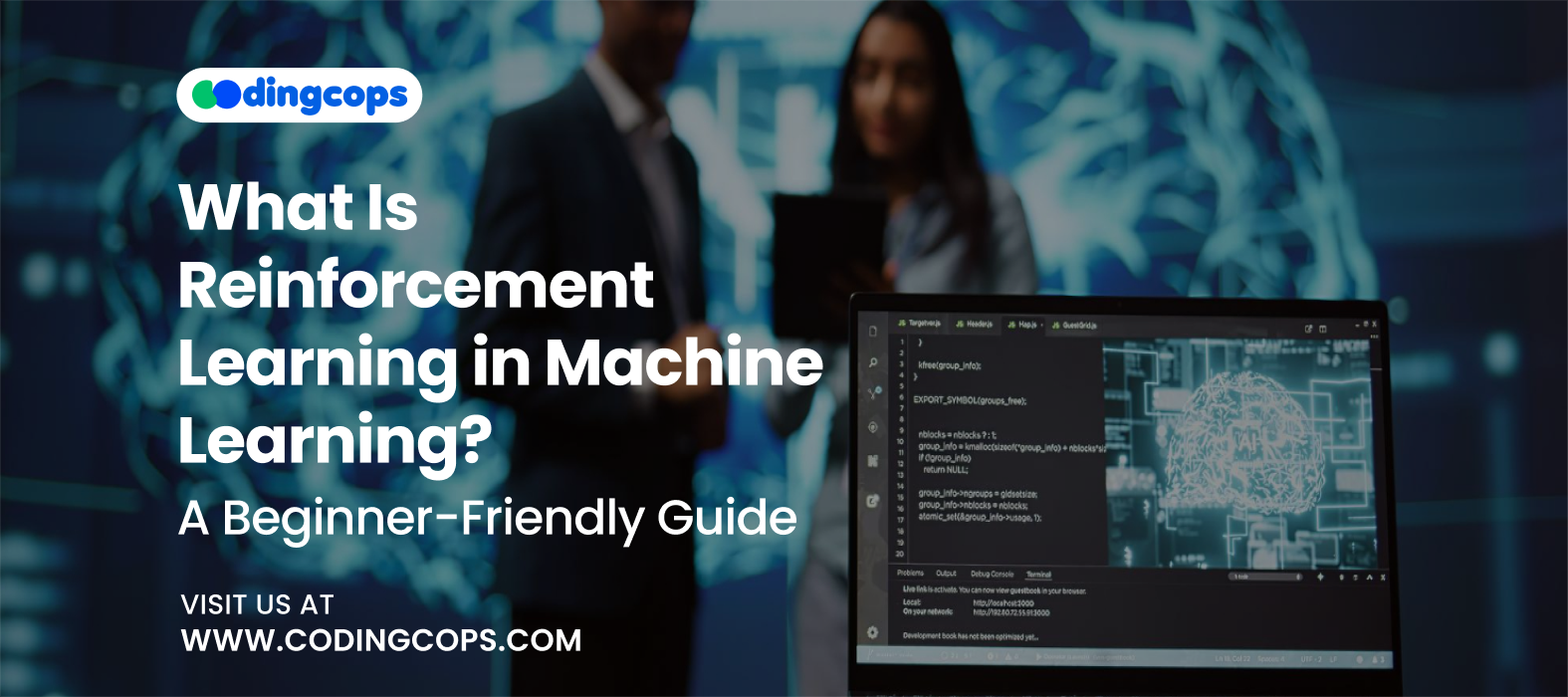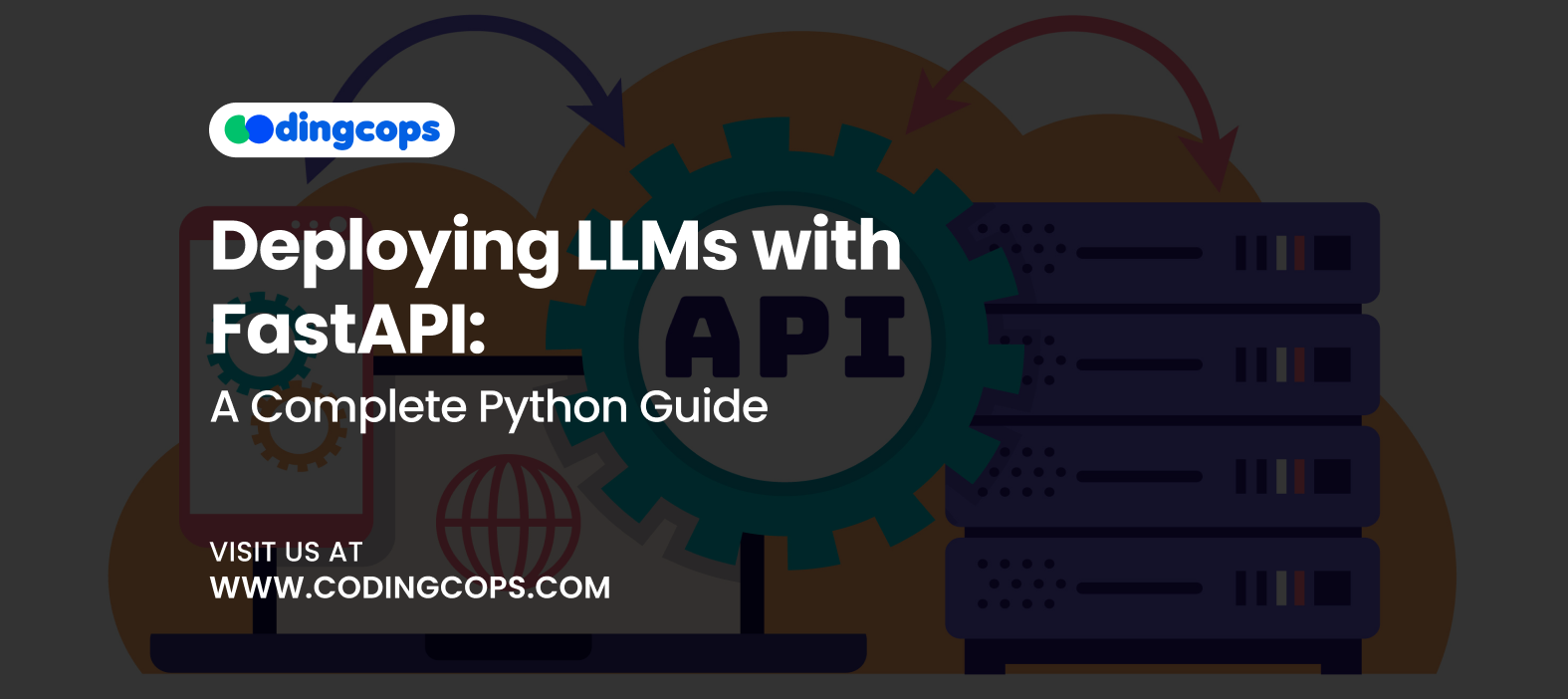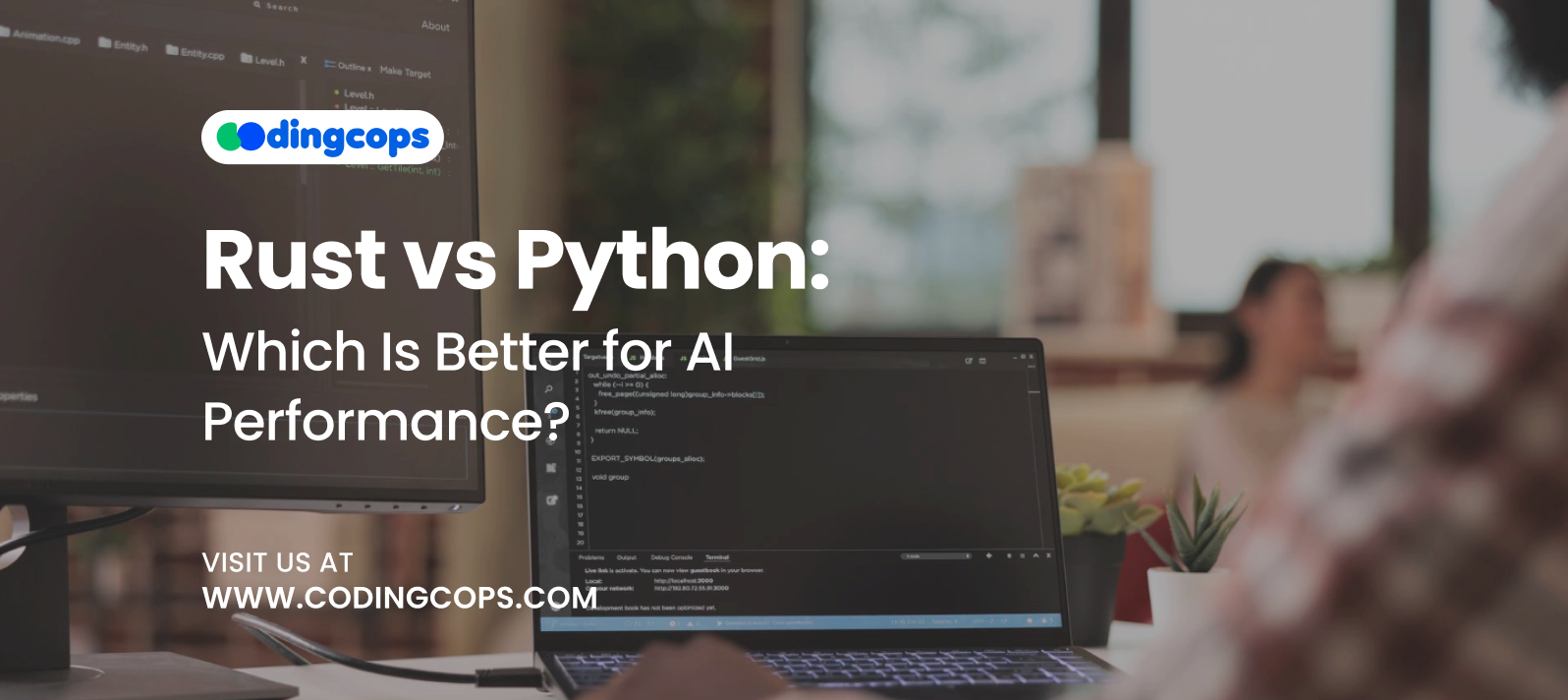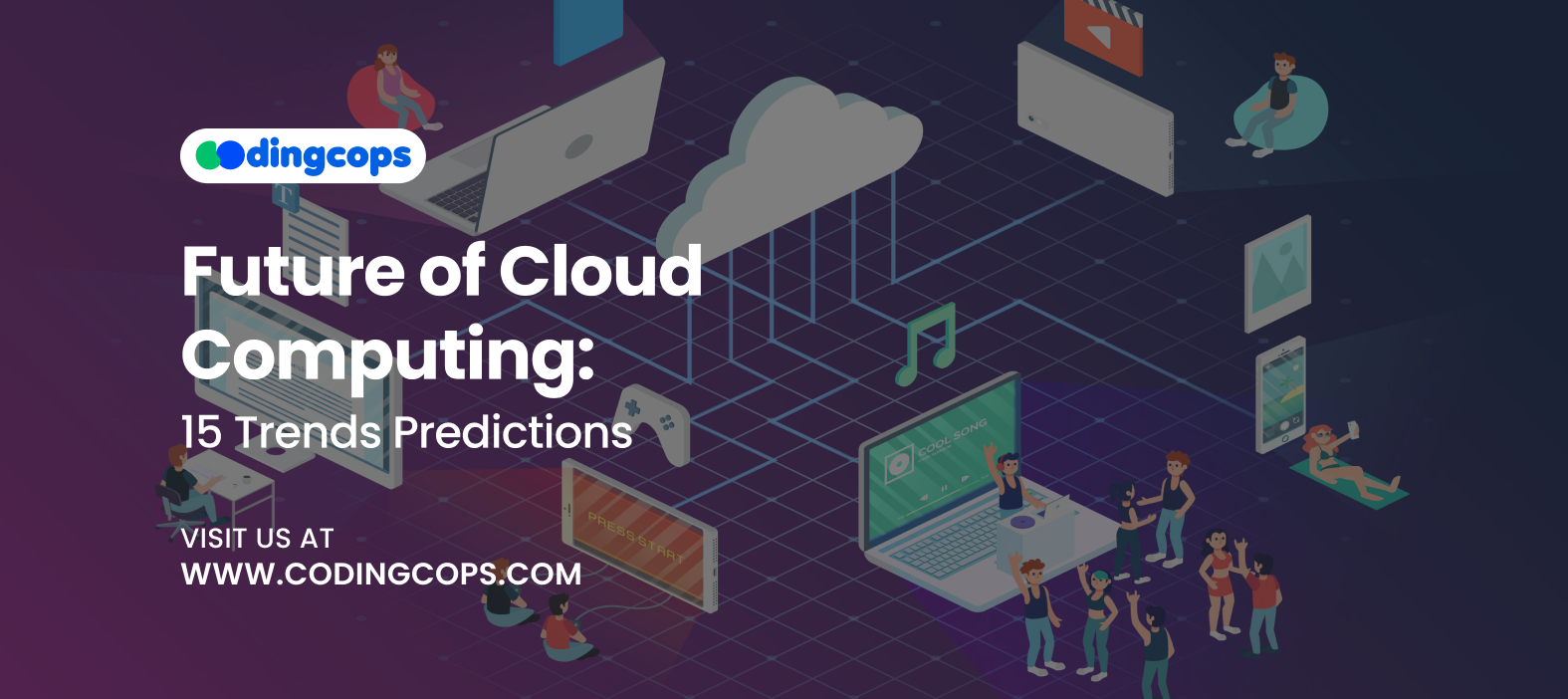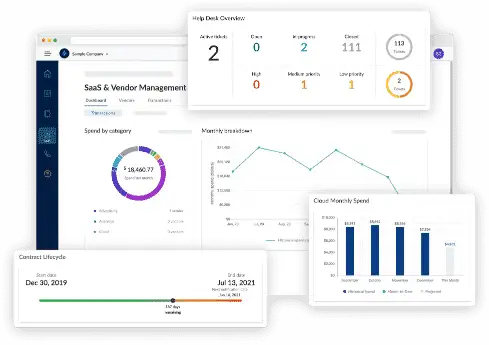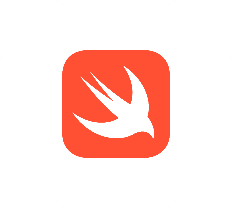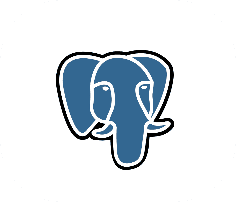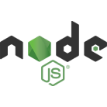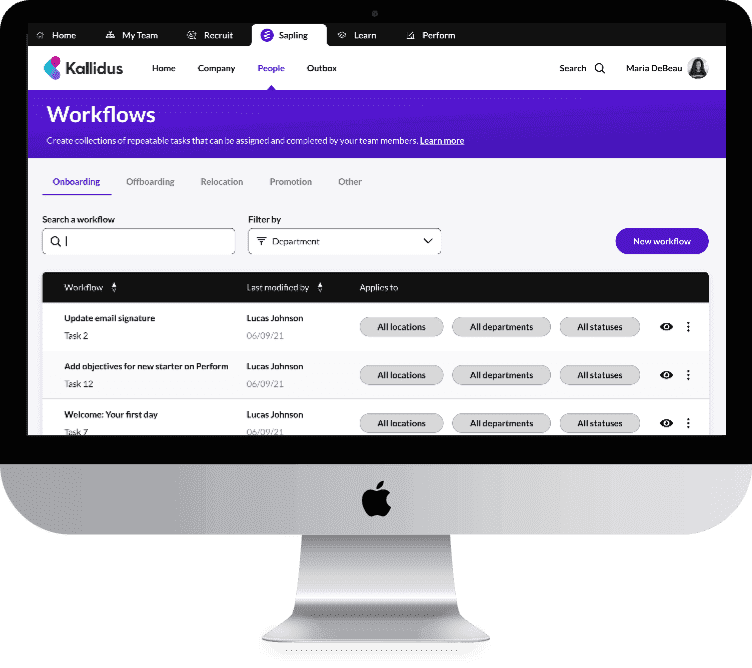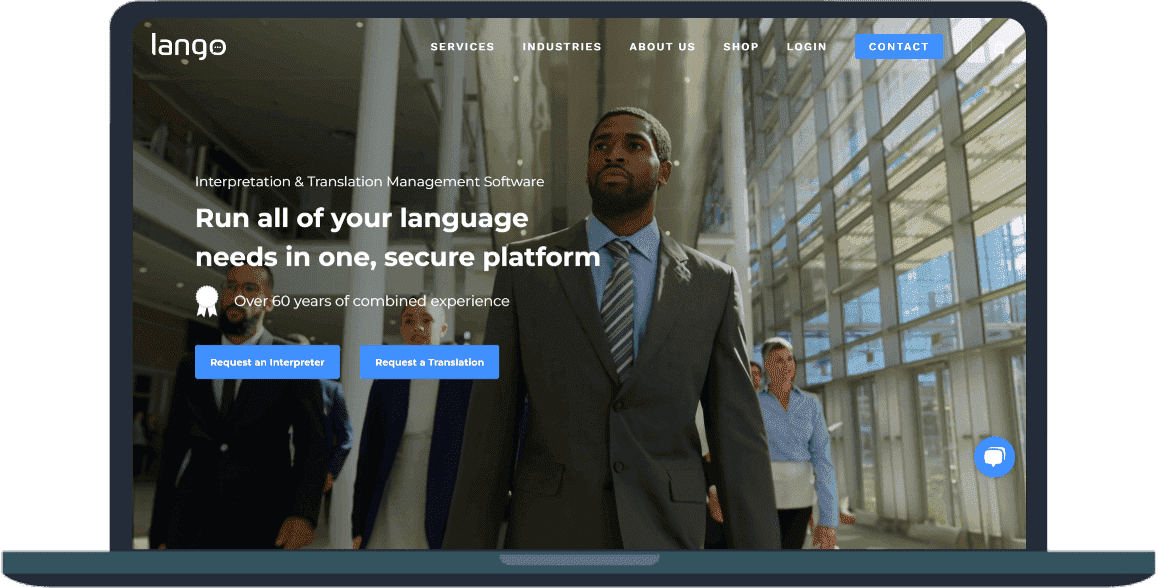Statista reports that the machine learning market will reach $568.32 billion over the next six years. This goes to show that machine learning will be extremely important in the years to come. However, machine learning models have to be trained; like a child learning to ride a bicycle, who will fall a few times before gradually figuring it out.
This process of learning through trial and error in machines is reinforcement learning. Moreover, it’s not about feeding data into a model and expecting accurate outputs; it’s about letting an agent explore an environment and learn from the outcomes of its actions.
So, in this guide, we will explore what reinforcement learning is in machine learning and its use cases in the real world.
What is Reinforcement Learning?
In the machine learning technique known as reinforcement learning, an agent gains knowledge about how to respond in a given setting by carrying out tasks and getting rewards in return. Reinforcement learning also involves creating a series of actions. The agent isn’t given explicit instructions or labeled data, as in supervised learning. Instead, in order to ascertain which tasks yield the maximum cumulative reward, it must experiment and progressively improve its strategy.
As a result, reinforcement learning works particularly effectively in scenarios where the correct response is unknown in advance but can be discovered via research.
Components in Reinforcement Learning
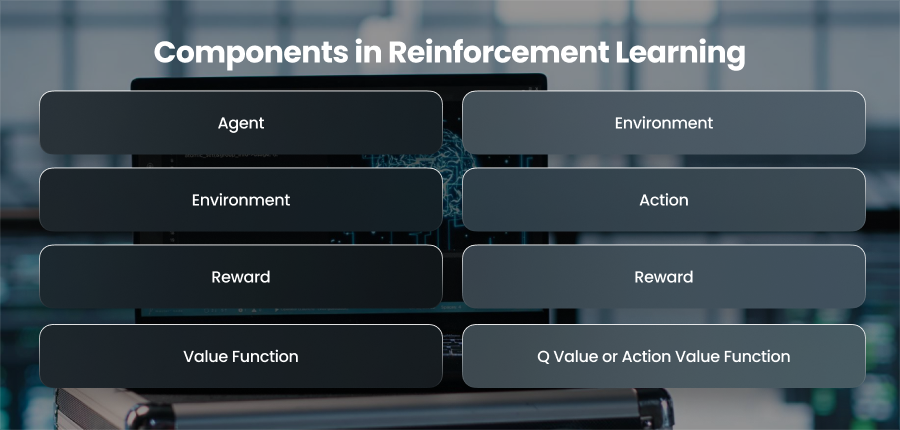
Agent
The agent is the learner or decision maker. Moreover, it’s the brain of the system that performs actions in the environment to achieve a goal. The player character in a video game might serve as the agent. Therefore, it is the agent’s responsibility to investigate and refine its approach in order to optimize the benefits it obtains.
Environment
The environment is the world or system that the agent interacts with. Furthermore, it responds to the agent’s actions and provides feedback in the form of new states and rewards. Moreover, this environment can be anything. Additionally, the environment’s role is to define the rules and dynamics that the agent must learn to work within.
State
The state is a snapshot of the environment at a given moment. Moreover, it contains all the information the agent can observe and use to decide its next action. Also, states can be simple or complex. Therefore, precise perception of the present condition is essential for the agent to make wise decisions.
Action
An action is what the agent decides to do in response to its current state. Furthermore, the action space is the collection of all feasible actions. Consequently, the objective is for the agent to discover which behaviors are most advantageous in particular conditions.
Reward
The reward is the feedback signal the agent receives after taking an action. Moreover, its numeric value tells the agent how good or bad its action was in a given state. Also, the reward can be positive or negative. So, the agent has to maximize the total cumulative reward over time.
Policy
The policy, which maps states to actions, is the agent’s strategy. Moreover, it tells the agent what action to take given the current state. Also, the policy can be deterministic or stochastic. The policy is what the agent tries to optimize during training to make better decisions over time.
Value Function
The value function estimates the expected long term reward that the agent will receive starting from a particular state and following a given policy. Moreover, it helps the agent evaluate whether being in a particular state is good or bad in terms of potential rewards.
Q Value or Action Value Function
While the value function looks at the desirability of a state, the Q value estimates the value of taking a particular action in a specific state. This then follows the policy afterwards. Furthermore, Q values are particularly helpful in algorithms such as Q learning, in which the agent gradually modifies these values to determine the optimal course of action.
How Does it Differ from Other Types of Machine Learning?
| Feature | Supervised Learning | Unsupervised Learning | Reinforcement Learning |
| Data Type | Labeled data | Unlabeled data | Feedback via reward/penalty |
| Goal | Predict outcomes | Discover patterns | Maximize cumulative reward |
| Learning Type | Static (pre existing data) | Static (pattern discovery) | Dynamic (interactive learning) |
| Example Scenario | Email classification | Customer segmentation | Game playing agent |
| Feedback Type | Explicit (labels) | None | Indirect (rewards over time) |
Reinforcement Learning Algorithms
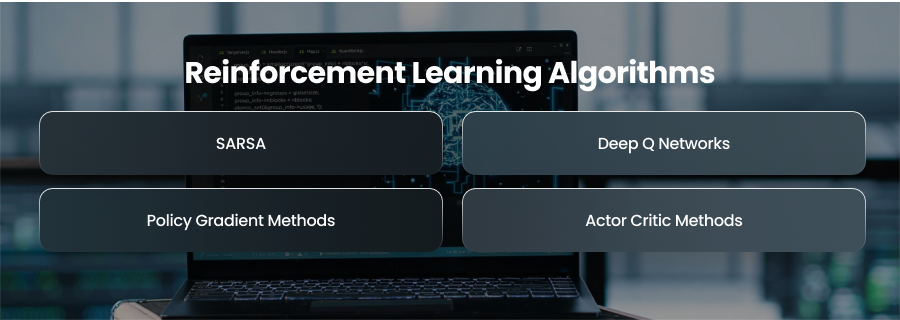
SARSA
SARSA is value based algorithm that functions similarly to Q learning but with an important difference. It updates its Q values based on the action actually taken by the agent rather than the maximum possible action. Additionally, by using this method, SARSA turns into an on-policy methodology, meaning it learns from the agent’s real behavior rather than from hypothetical ideal behavior. As a result, SARSA tends to be more cautious and could be safer in real world situations where it might be costly to look into unusual actions.
Deep Q Networks
Deep Q Networks address one of the biggest limitations of traditional Q learning: its inability to scale to large or continuous environments. Hence, instead of storing Q values in a table, DQNs use deep neural networks to approximate the Q value function. This enables agents to process high dimensional input data, including images or complex sensor information, and make decisions accordingly. Also, to stabilize learning, DQN introduces techniques like experience replay, where past interactions are stored and sampled randomly during training, and target networks. These are periodically updated to reduce feedback loops in the learning process.
Policy Gradient Methods
While value based methods focus on estimating the value of taking certain actions, like Policy Gradient, directly optimize the agent’s policy, the function that decides which action to take. When working with continuous action spaces, where it is impractical to determine a discrete set of actions, these techniques are especially helpful. Consequently, policy gradient approaches interpret the policy as a probability distribution and modify it through gradient ascent to maximize expected rewards, rather than depending on a Q table or value function.
They are capable of learning stochastic policies, which means the agent can behave differently in the same state depending on the probability. However, policy gradient algorithms often suffer from high variance and can be slower to converge compared to value based methods.
Actor Critic Methods
Actor Critic methods combine the strengths of both value based and policy based approaches into a hybrid model. In this architecture, the actor updates the policy based on the current strategy. Moreover, the critic evaluates how good the action was by estimating the value function. This setup allows for more stable and efficient learning, especially in complex environments.
How Reinforcement Learning Works?
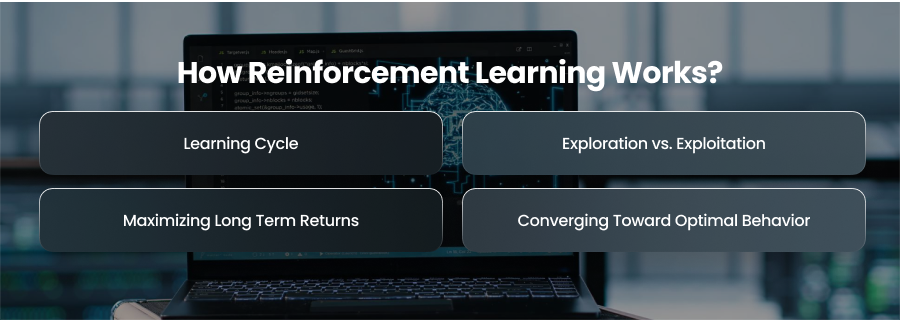
Learning Cycle
In reinforcement learning, the agent observes its present condition in the environment to start the learning process. For instance, the position of a gaming character or the reading from a robot’s sensor are examples of states that contain all the information an agent needs to make a choice. So, based on this state and its current policy, the agent selects an action. The environment reacts to the activity by offering a new state and reward in line with it.
Exploration vs. Exploitation
Finding a balance between exploitation and exploration is one of the core problems in reinforcement learning. Additionally, exploration entails experimenting with novel approaches in order to uncover unanticipated results and maybe more effective tactics. However, exploitation means using the best known actions based on current knowledge to gain immediate rewards.
Maximizing Long Term Returns
Because it emphasizes on future cumulative rewards rather than merely current benefits, reinforcement learning is distinct. A modest reward may result from an activity now, but a larger benefit may follow later. For example, in a strategy game, building a structure might not yield benefits, but it can open up powerful options in the long run.
Converging Toward Optimal Behavior
As the agent continues to interact with the environment and refine its rules, it starts to make more logical decisions. The agent should finally develop an optimal policy, which is a strategy that tells it how to act in each situation to maximize the total reward.
The complexity of the environment and how frequently the agent considers new possibilities are two variables that affect how quickly and accurately this convergence occurs.
Use Cases of Reinforcement Learning
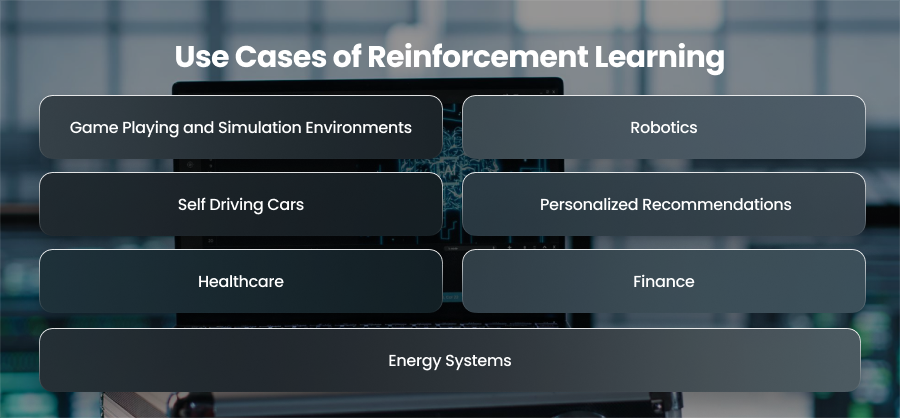
Game Playing and Simulation Environments
Gaming is one of the most well-known industries that use reinforcement learning. This is because games are perfect for educating RL agents since they offer a regulated setting with explicit rules and incentives. These simulations also enable machine learning developers to test new algorithms before implementing them.
Robotics
Since robots need to learn how to interact with their physical environment, reinforcement learning is crucial to robotics. Furthermore, the complexity of the actual world are too much for traditional programming techniques to manage. Reinforcement learning may also allow robots to learn from their experiences and modify their behavior in response to environmental input.
Reinforcement learning is used in manufacturing to teach robotic arms to carry out tasks like sorting or assembling parts. Through trial and error, these robots can also learn exact movements. As a result, this increases flexibility and efficiency.
Self Driving Cars
Autonomous vehicles rely on reinforcement learning to make real time decisions in unpredictable environments. Also, driving involves constant decision making. RL enables self driving systems to learn optimal driving strategies by simulating millions of driving scenarios in a virtual environment.
Before implementing their models in the real world, businesses like as Tesla train them in simulated driving scenarios using reinforcement learning. Agents might face risky scenarios in these simulations, such as a pedestrian abruptly crossing the street. You can do this to make automobiles that are safer and more responsive.
Personalized Recommendations
Reinforcement learning is being used more and more in applications like eCommerce to deliver personalized consumer experiences. Furthermore, unlike conventional recommendation engines that just rely on user history, RL models have the potential to evolve over time in response to user action.
For example, YouTube use RL to improve video recommendations based on user interaction trends. Additionally, these systems are always refining their strategies to increase customer satisfaction.
Healthcare
Reinforcement learning is being investigated for applications in the healthcare sector that call for adaptive and customized decision making. One of the promising areas is treatment planning, where RL can assist in determing the best course of action for individual patients.
Additionally, RL has promise in drug development, as agents may more quickly identify interesting compounds by examining combinations of molecules.
Finance
Reinforcement learning is making waves in finance and investment by enabling more intelligent and adaptive trading strategies. Also, financial markets are dynamic and often unpredictable, making them ideal candidates for RL based decision making.
In algorithmic trading, RL models learn to buy or sell assets based on historical an real time data to maximize returns. These agents can also adjust to changes in the market and gradually improve performance. In order to assist investors allocate assets in a way that strikes a balance between risk and return, RL is also utilized in portfolio management.
Energy Systems
In order to optimize energy distribution and consumption as the globe transitions to sustainable energy, reinforcement learning is becoming increasingly important. By analyzing consumption patterns and dynamically modifying supply, RL assists smart grids in managing power needs.
This application is particular important for grid reliability and for promoting the efficient use of solar and other renewable resources.
Final Words
Machines can learn from experience due to reinforcement learning. Beginners can therefore study how this dynamic field continues to impact the future and appreciate its transformational potential by comprehending its algorithms and application cases.

